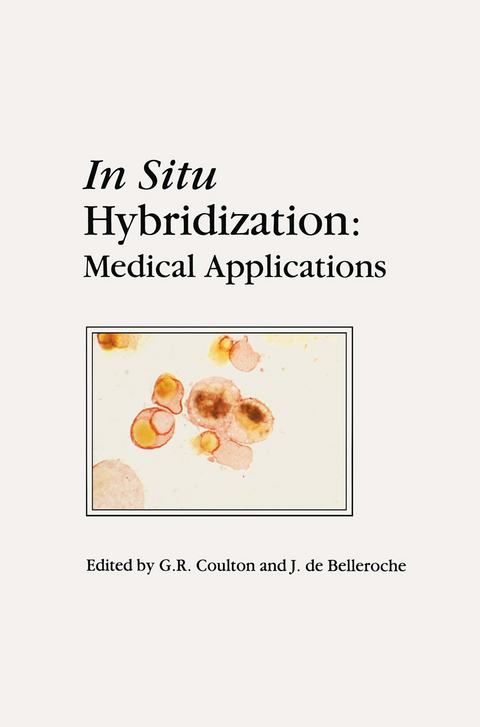
In Situ Hybridization: Medical Applications
Seiten
1992
Springer (Verlag)
978-0-7923-8989-7 (ISBN)
Springer (Verlag)
978-0-7923-8989-7 (ISBN)
In situ hybridization has developed as a means of localizing specific DNA and RNA sequences within tissues. Complementary DNA, RNA or oligonucleotide probes, suitably labelled, are hybridized to specific DNA or RNA targets within tissues.
In situ hybridization has developed as a means of localizing specific DNA and RNA sequences within tissues. The great strength of this approach is the ability to relate the distribution of specific nucleic acids with cell structures and the protein products of the target gene by means of immunohistochemistry. Complementary DNA, RNA or oligonucleotide probes, suitably labelled, are hybridized to specific DNA or RNA targets within tissues. The spatial information thus obtained has contributed greatly to our understanding of such diverse areas of research as gene mapping, viral infection, cytogenetics, protein synthesis, prenatal diagnosis and tissue grafting.
This book is not intended as another recipe book, although it does describe theoretical and practical aspects of the technology. Rather, the authors critically describe the contribution made by in situ hybridization to specific areas of medical research.
In situ hybridization has developed as a means of localizing specific DNA and RNA sequences within tissues. The great strength of this approach is the ability to relate the distribution of specific nucleic acids with cell structures and the protein products of the target gene by means of immunohistochemistry. Complementary DNA, RNA or oligonucleotide probes, suitably labelled, are hybridized to specific DNA or RNA targets within tissues. The spatial information thus obtained has contributed greatly to our understanding of such diverse areas of research as gene mapping, viral infection, cytogenetics, protein synthesis, prenatal diagnosis and tissue grafting.
This book is not intended as another recipe book, although it does describe theoretical and practical aspects of the technology. Rather, the authors critically describe the contribution made by in situ hybridization to specific areas of medical research.
1 Techniques for in situ hybridization histochemistry.- 2 Use of comparative in situ hybridization and immunocytochemistry for the study of regulatory peptides.- 3 Application of in situ hybridization to studies of messenger RNA in the nervous system: functional correlations and their quantitation.- 4 The use of in situ hybridization in studies of viral disease.- 5 In situ hybridization for molecular cytogenetics.
| Erscheint lt. Verlag | 31.5.1992 |
|---|---|
| Zusatzinfo | XII, 116 p. |
| Verlagsort | Dordrecht |
| Sprache | englisch |
| Maße | 155 x 235 mm |
| Themenwelt | Studium ► 2. Studienabschnitt (Klinik) ► Humangenetik |
| Studium ► Querschnittsbereiche ► Infektiologie / Immunologie | |
| Naturwissenschaften ► Biologie ► Zellbiologie | |
| ISBN-10 | 0-7923-8989-1 / 0792389891 |
| ISBN-13 | 978-0-7923-8989-7 / 9780792389897 |
| Zustand | Neuware |
| Haben Sie eine Frage zum Produkt? |
Mehr entdecken
aus dem Bereich
aus dem Bereich
Eine sehr persönliche Geschichte | Der New York Times-Bestseller
Buch | Softcover (2023)
Ullstein Taschenbuch Verlag
CHF 30,75
Die revolutionäre Medizin von morgen (Lifespan)
Buch | Softcover (2020)
DuMont Buchverlag
CHF 22,40
Buch | Softcover (2022)
John Wiley & Sons Inc (Verlag)
CHF 169,95


